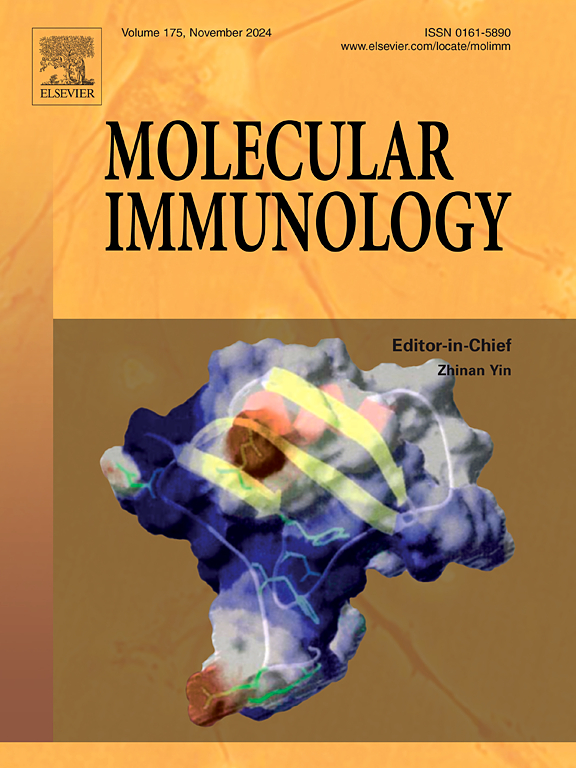NLRP3通过M-CSF/M-CSFR信号调控急性辐射肺损伤中巨噬细胞功能
IF 3
3区 医学
Q2 BIOCHEMISTRY & MOLECULAR BIOLOGY
引用次数: 0
摘要
肺泡巨噬细胞是健康肺中最丰富的巨噬细胞,在维持肺稳态和协调损伤后组织修复中起着重要作用。许多研究证明,急性放射性肺损伤的发生、发展和进展与肺泡巨噬细胞有关。然而,急性放射性肺损伤中肺相关巨噬细胞的功能和发育过程尚不清楚。为了研究NLRP3在辐射减轻肺损伤中的作用,我们建立了野生型和NLRP3-/-小鼠模型,我们发现NLRP3-/- IR组肺炎程度减轻。在体内实验中,我们观察到NLRP3-/-组巨噬细胞数量减少。同时,在体外实验中我们发现NLRP3-/-组与对照组相比,放射后巨噬细胞更容易向M2极化。我们的研究结果表明,NLRP3在辐射性肺损伤发生时通过M-CSF/M-CSFR信号传导影响肺泡巨噬细胞的分化和趋化。本文章由计算机程序翻译,如有差异,请以英文原文为准。
NLRP3 regulates macrophage function by M-CSF/M-CSFR signaling in acute radiation-induced lung injury
Alveolar macrophages are the most abundant macrophages in the healthy lungs and are important players in maintaining lung homeostasis as well as orchestrating tissue repair after injury. Many studies have proved that the initiation, development and progression of acute radiation-induced lung injury are associated with alveolar macrophages. However, lung-associated macrophages function and developmental processes in acute radiation-reduced lung injury remain elusive. To investigate the role of NLRP3 in radiation-reduced lung injury, we established wild-type and NLRP3-/- mice models, and we found that the extent of pneumonia reduced in NLRP3-/- IR group. In in vivo experiments, we observed a decrease in the number of macrophages in NLRP3-/- group. At the same time, in in vitro experiments we have found that macrophages are more easily polarized toward the M2 after radiation in NLRP3-/- group compared with the control group. Our findings reveal that NLRP3 affects the differentiation and chemotaxis of alveolar macrophages through M-CSF/M-CSFR signalling at the onset of radiation-induced lung injury.
求助全文
通过发布文献求助,成功后即可免费获取论文全文。
去求助
来源期刊

Molecular immunology
医学-免疫学
CiteScore
6.90
自引率
2.80%
发文量
324
审稿时长
50 days
期刊介绍:
Molecular Immunology publishes original articles, reviews and commentaries on all areas of immunology, with a particular focus on description of cellular, biochemical or genetic mechanisms underlying immunological phenomena. Studies on all model organisms, from invertebrates to humans, are suitable. Examples include, but are not restricted to:
Infection, autoimmunity, transplantation, immunodeficiencies, inflammation and tumor immunology
Mechanisms of induction, regulation and termination of innate and adaptive immunity
Intercellular communication, cooperation and regulation
Intracellular mechanisms of immunity (endocytosis, protein trafficking, pathogen recognition, antigen presentation, etc)
Mechanisms of action of the cells and molecules of the immune system
Structural analysis
Development of the immune system
Comparative immunology and evolution of the immune system
"Omics" studies and bioinformatics
Vaccines, biotechnology and therapeutic manipulation of the immune system (therapeutic antibodies, cytokines, cellular therapies, etc)
Technical developments.
 求助内容:
求助内容: 应助结果提醒方式:
应助结果提醒方式:


